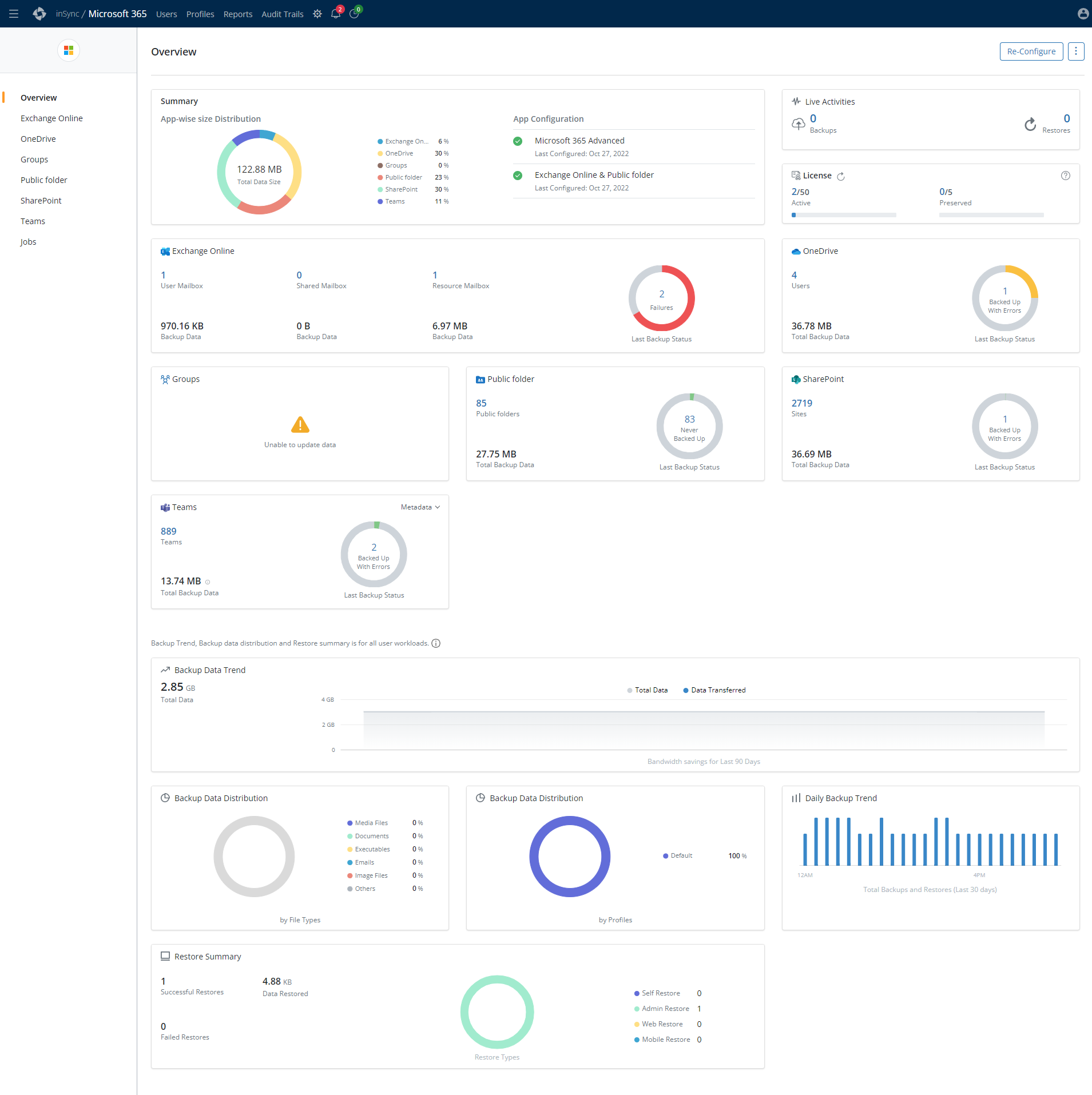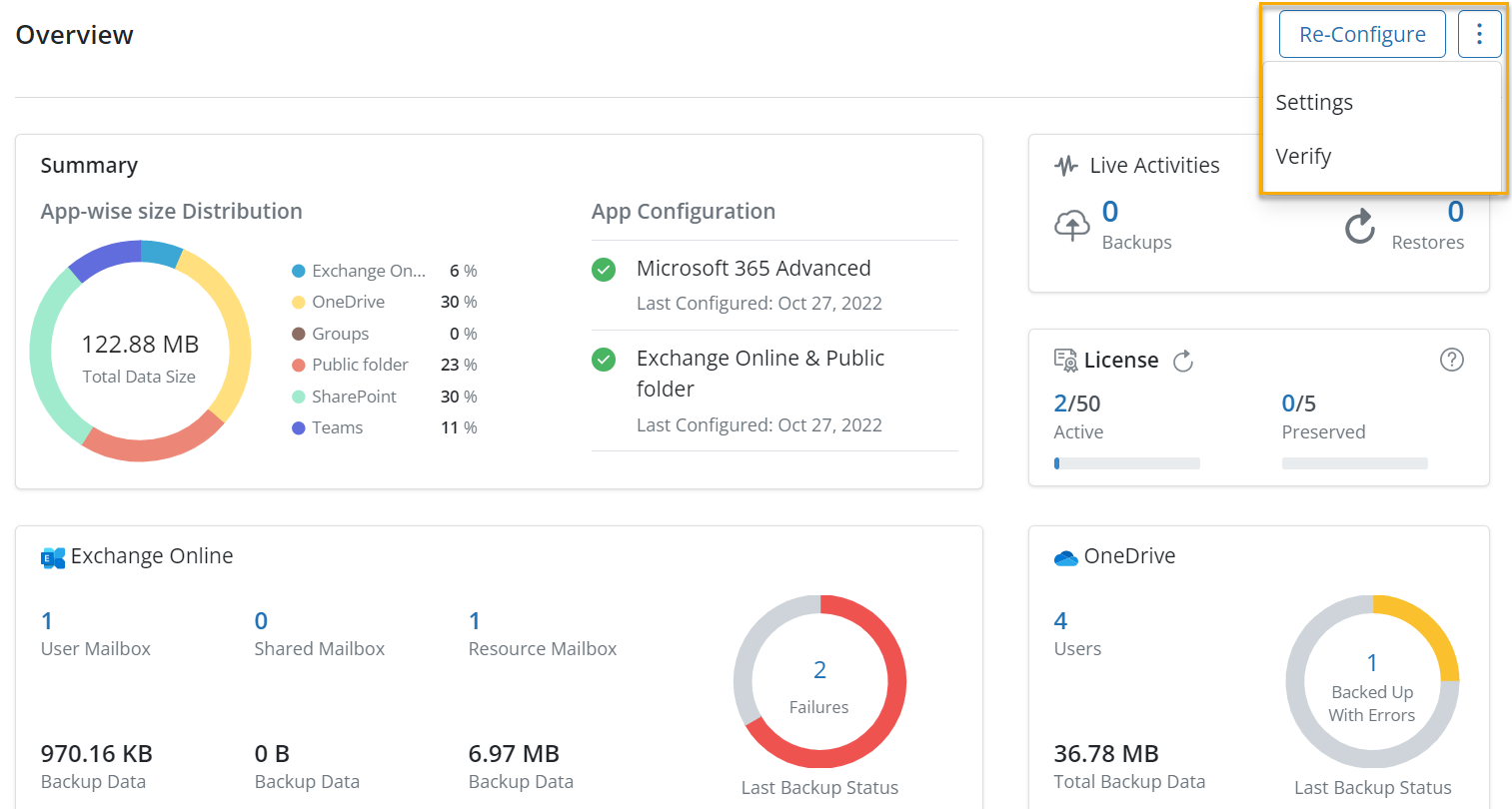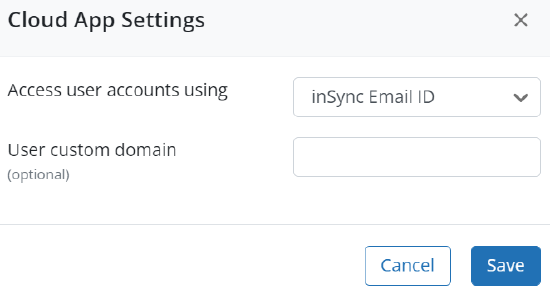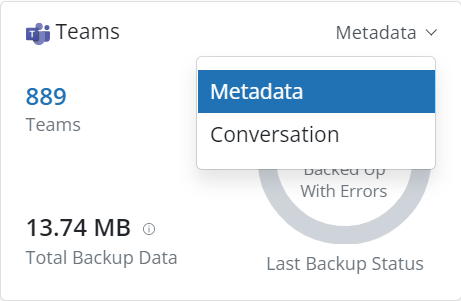Microsoft 365 Overview page
Overview
The Overview page provides you a comprehensive view of all the configured Microsoft 365 apps at a glance.

Access Path
Sign in to inSync Management Console and navigate to Microsoft 365.
An overview page that provides a holistic view of all the configured Microsoft 365 apps is displayed.
The following information is displayed on the Overview page:
| Component | Description |
|---|---|
| Summary | |
| App-wise size distribution |
The number in the center of the pie chart displays the total size of backed up data for configured Microsoft 365 apps. Also, displays a percentage value of data backup for each Microsoft 365 apps.
Hover over the pie chart to view the data size distribution of specific configured Microsoft 365 apps. |
| App Configuration |
Displays the date and timestamp of the last successful configuration of your configured Microsoft 365 apps. |
| Configured Microsoft 365 apps | |
| Exchange Online |
If you have configured Exchange Online, you can view the following details:
You can click on the number of user mailboxes to navigate to the Exchange Online details page. |
| OneDrive |
If you have configured OneDrive, you can view the following details:
You can click on the number of users to navigate to the OneDrive details page. |
| SharePoint |
If you have configured SharePoint, you can view the following details:
You can click on the number of sites to navigate to the SharePoint details page. |
|
Teams |
If you have configured Teams, you can view the following details:
By default, the last backup status is displayed for Metadata. Click on the dropdown and select Conversation to view the last backup status for Conversation.
You can click on the number of Teams to navigate to the SharePoint details page. |
| Public Folder |
If you have configured Public Folder, you can view the following details:
You can click on the number of users to navigate to the Public Folder details page. |
| Groups |
If you have configured Groups, you can view the following details:
You can click on the number of Groups to navigate to the Groups details page. |
Note: The backup status count includes only the configured resources. It does not include the resources that are not configured for backup. So you might observe a mismatch between backup status count and total count of resources.
License
View the active and preserved license statistics through the License card. For more information about the license, see active and preserved license consumption rationale. The license statistics will be refreshed every 7-10 minutes.

Considerations:
-
As a Cloud Administrator, you can view the count of both active and preserve licenses allocated and consumed for all configured workloads and profiles.
-
As a non-cloud administrator:
-
If you have Manage User permission, you can view count of both active and preserve license consumed for the workloads and profiles assigned to you.
-
If you do not have Manage User permission, you can view only the active license consumed count for the workloads and profiles assigned to you.
-
The following table lists the License card fields.
| Component | Description |
|---|---|
| Active |
Displays the total number of Microsoft 365 active licenses allocated as well as consumed by the user. For example, 6/100 Active indicates that out of a total of 100 Microsoft 365 active licenses allocated, 6 are consumed by the user currently. Click 6 to drill down to the User Details page where you can view details of users who have consumed active Microsoft 365 licenses.
|
| Preserved |
Displays the total number of Microsoft 365 preserved licenses allocated as well as consumed by the user. For example, 1/11 Preserved indicates that out of a total of 11 Microsoft 365 preserved licenses allocated, 1 is consumed by the user currently. Click 1 to drill down to the Users details page where you can view details of the user who has consumed an active Microsoft 365 license.
|
Actions
You can perform the following actions on the Overview page.

- Click Re-Configure to reconfigure Microsoft 365 app.
- Click Settings to update the user account access settings.

By default, inSync Email ID is configured for accessing user accounts. To configure inSync to use User Principal Name (UPN) for accessing user accounts, select AD Attribute. - Click Verify to verify the Microsoft 365 configuration.
Summary
| Action | Description |
|---|---|
| App Configuration | Displays the details and history of the configured apps. |
| Revoke Access | Click Revoke Access to revoke access to a specific Microsoft 365 app. |
Things to Consider
For Business license edition: If the Microsoft 365 tenant used for Microsoft 365 configuration is a Multi-Geo tenant, then, the authorization fails with the following error:
Error: M365 Multi-Geo tenant backup is not supported with the Business license.
Workaround: To resolve this error, it is recommended that you upgrade your license to higher editions such as Enterprise or Elite.


